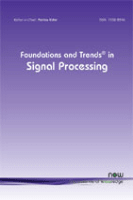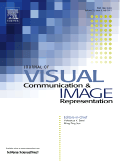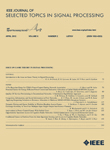
Brain-Computer Interfaces
metrics 2024
Advancing Human-Technology Interaction
Introduction
Brain-Computer Interfaces is a pioneering journal dedicated to the interdisciplinary exploration of neurotechnology, highlighting advancements and innovative approaches in the realm of brain-computer interface (BCI) research. Published by Taylor & Francis Ltd in the United Kingdom, this journal operates under a stringent peer-review process, ensuring high-quality contributions that advance the field. With a converged publication period from 2014 to 2024, it serves as a vital resource for researchers, professionals, and students alike, offering insights into areas such as behavioral neuroscience, biomedical engineering, and human-computer interaction. The journal is indexed in Scopus, with varying quartile rankings reflecting its status in several categories, including a commendable Q2 in Electrical and Electronic Engineering, positioning it among the key publications in the field. As BCIs continue to revolutionize interactions between humans and technology, Brain-Computer Interfaces remains an essential platform for sharing groundbreaking research, fostering collaboration, and inspiring future innovations.
Metrics 2024
 0.42
0.42 1.80
1.80 1.90
1.90 22
22Metrics History
Rank 2024
Scopus
IF (Web Of Science)
JCI (Web Of Science)
Quartile History
Similar Journals

IEEE Transactions on Signal and Information Processing over Networks
Connecting Minds: Unveiling the Future of Signal Processing.IEEE Transactions on Signal and Information Processing over Networks, published by IEEE-INST ELECTRICAL ELECTRONICS ENGINEERS INC, stands at the forefront of innovation in the fields of signal processing, computer networks, and information systems. With an impressive track record since its inception in 2015, this journal boasts a notable impact factor, placing it in the prestigious Q1 category in its respective fields, including Signal Processing and Computer Networks & Communications. Researchers and professionals will benefit greatly from its rigorously peer-reviewed articles that present cutting-edge discoveries and methodologies relevant to the ever-evolving landscape of network technology. Although the journal does not currently offer open access options, it remains a vital resource for advanced study and application, ensuring that researchers can stay abreast of the latest developments and trends shaping the industry. With Scopus rankings highlighting its competitive standing, this publication is an essential platform for disseminating meaningful scholarly contributions and fostering collaboration within the global research community.

Biomedical Signal Processing and Control
Exploring the frontiers of biomedical signal processing.Biomedical Signal Processing and Control is a premier academic journal published by ELSEVIER SCI LTD that stands at the forefront of the rapidly evolving fields of biomedical engineering, health informatics, and signal processing. With an impressive impact factor reflecting its scholarly influence and high standards of research, this journal has been recognized in the Q1 quartile category across multiple disciplines as of 2023. Specifically, it holds esteemed positions within Biomedical Engineering, Health Informatics, and Signal Processing, where it ranks in the top tier of its field on Scopus: #19/131, #21/138, and #47/303 respectively. Published continually from 2006 to 2024, the journal serves as a critical platform for researchers, healthcare professionals, and students, fostering innovation in signal processing techniques and their applications in biomedical systems. Access to cutting-edge research and methodologies makes it an indispensable resource for advancing knowledge and practice within these interdisciplinary domains.

Journal of Electromagnetic Engineering and Science
Pioneering Insights in Electrical and Communication TechnologiesThe Journal of Electromagnetic Engineering and Science (ISSN: 2671-7255, E-ISSN: 2671-7263) is a premier Open Access journal published by the Korean Institute of Electromagnetic Engineering & Science. Since its establishment in 2001, it has been dedicated to advancing knowledge in the fields of Electrical Engineering, Electromagnetic Theory, and Communications, making significant contributions to both academia and industry. The journal holds an impressive Q2 quartile ranking in notable categories such as Computer Networks and Communications and Electrical and Electronic Engineering as of 2023, reflecting its robust scientific impact and reputation. It is indexed in Scopus, with commendable rankings in multiple fields, enhancing its visibility and reach among researchers. The journal's open-access model ensures that cutting-edge research is accessible to a global audience, fostering collaboration and innovation. Researchers, professionals, and students in the domain are encouraged to contribute and engage with high-quality articles that cover the latest advancements and trends in electromagnetic engineering and associated sciences.

Foundations and Trends in Signal Processing
Shaping the future of Signal Processing through impactful research.Foundations and Trends in Signal Processing is a premier academic journal published by NOW PUBLISHERS INC, specializing in the dynamic field of Signal Processing. With an impressive 2023 Q1 rank in its category and a notable position of 3rd out of 131 in the Scopus rankings for Computer Science and Signal Processing, this journal stands at the forefront of research dissemination in its domain. Established in 2007, it has provided a platform for high-quality research articles that cover cutting-edge topics and emerging trends in Signal Processing, which is critical for advancements in areas such as communications, image processing, and machine learning. Although the journal operates under a subscription model, it offers a wealth of vital information aimed at researchers, professionals, and students alike, fostering a robust academic dialogue and enhancing the knowledge base within this important field.

JOURNAL OF VISUAL COMMUNICATION AND IMAGE REPRESENTATION
Empowering Visual Storytelling in a Digital AgeJOURNAL OF VISUAL COMMUNICATION AND IMAGE REPRESENTATION, published by Academic Press Inc Elsevier Science, is an influential platform dedicated to the realms of visual communication, media technology, and advanced image representation. With a strong focus on interdisciplinary approaches, this journal aims to foster the exchange of innovative ideas among researchers and professionals in the fields of computer vision, image processing, and signal processing. Recognized for its significance, it boasts an impressive impact factor within its category quartiles; notably, it ranks Q2 in Computer Vision and Pattern Recognition and Electrical and Electronic Engineering, while achieving Q1 in Media Technology. Based in the United States, the journal not only provides valuable insights into the latest developments from 1990 to 2024 but also encourages cutting-edge research that enhances multimedia systems and user interactions. As a vital resource for students, researchers, and industry professionals alike, the journal ensures a robust understanding of visual information processing, critical for navigating today's digital landscape.

EURASIP Journal on Wireless Communications and Networking
Bridging Knowledge in Wireless CommunicationsThe EURASIP Journal on Wireless Communications and Networking, published by Springer, stands as a pivotal platform dedicated to advancing the field of wireless communications and networking. With an ISSN of 1687-1472 and E-ISSN of 1687-1499, this Open Access journal has been disseminating high-quality research since 2004, ensuring broad accessibility for scholars and professionals worldwide. Maintaining an esteemed position in the academic community, it is classified in the Q2 quartile for 2023 across critical categories including Computer Networks and Communications, Computer Science Applications, and Signal Processing. The journal's performance is reflected in its Scopus rankings, which place it in the 73rd percentile for Computer Networks and Communications and the 72nd percentile for both Computer Science Applications and Signal Processing. With a focus on innovative research and practical applications, the EURASIP Journal is an essential resource for anyone seeking to contribute to or stay informed in the dynamic landscape of wireless communication technology.

Frontiers in Neuroscience
Bridging knowledge gaps in neuroscience.Frontiers in Neuroscience, published by FRONTIERS MEDIA SA, is a premier open-access journal dedicated to advancing our understanding of the nervous system through innovative and rigorous research. Since its inception in 2007, this journal has become an influential platform for researchers, featuring a diverse range of topics across various subfields of neuroscience. With its current ranking in the second quartile (Q2) of the category "Neuroscience (miscellaneous)" and a commendable position of #40 out of 113 in general neuroscience according to Scopus, Frontiers in Neuroscience is recognized for its high-impact contributions. The journal promotes free access to scholarly work, ensuring that cutting-edge neuroscience studies reach a global audience and foster collaboration across disciplines. By bridging gaps in knowledge and facilitating the exchange of ideas, Frontiers in Neuroscience plays a pivotal role in addressing the complexities of the nervous system and its effects on behavior, cognition, and health.

Sovremennye Tehnologii v Medicine
Unlocking New Frontiers in Medical ScienceSovremennye Tehnologii v Medicine is a prominent academic journal dedicated to the exploration and dissemination of contemporary technologies in the field of medicine. Published by the esteemed Nizhniy Novgorod State Medical Academy, this journal serves as a vital platform for researchers, healthcare professionals, and students seeking to stay at the forefront of advancements in biochemistry, genetics, and molecular biology. With an impact factor that positions it within the Q3 quartile for both Biochemistry, Genetics and Molecular Biology and Medicine categories as of 2023, it highlights a commitment to quality research. The journal, identified by the ISSN 2076-4243, provides a rich repository of knowledge for those interested in the innovative applications of medical science, contributing significantly to the academic discourse and the practical world of healthcare. With an open access option, it ensures that its valuable content is readily accessible to a global audience, fostering collaborative advancements in modern medical practices.

IEEE Journal of Selected Topics in Signal Processing
Elevating Standards in Signal Processing ScholarshipIEEE Journal of Selected Topics in Signal Processing is a premier academic publication dedicated to the advancement of knowledge in the field of signal processing. Published by IEEE-INST ELECTRICAL ELECTRONICS ENGINEERS INC, the journal boasts an impressive impact factor that places it in the top tier of its category; ranked Q1 in both Electrical and Electronic Engineering and Signal Processing for 2023. Given its esteemed standing, the journal serves as a vital resource for researchers, professionals, and students alike, providing cutting-edge insights and developments that shape the future of signal processing. The journal encompasses a wide array of topics relevant to the evolving landscapes of electrical engineering and computer science, with particular significance in innovative applications and methodologies. As a platform for disseminating high-quality research, this journal remains essential for those seeking to stay at the forefront of this dynamic field. You can explore the latest contributions and findings, benefiting from the journal's influential status in the realm of signal processing.

Turkish Journal of Electrical Engineering and Computer Sciences
Bridging Theory and Practice in Electrical EngineeringThe Turkish Journal of Electrical Engineering and Computer Sciences, published by the esteemed Tubitak Scientific & Technological Research Council of Turkey, serves as a pivotal platform for disseminating high-quality research in the interdisciplinary fields of electrical engineering and computer science. With an ISSN of 1300-0632 and an E-ISSN of 1303-6203, this journal spans a rich publication history from 1996 to 2024, contributing significantly to its field with a reputable standing in the Scopus rankings. The journal is categorized within the Q3 quartile for both Computer Science and Electrical and Electronic Engineering, reflecting its commitment to scholarly excellence, as evidenced by its rankings—#111 out of 232 in General Computer Science and #420 out of 797 in Electrical and Electronic Engineering. Aimed at researchers, professionals, and students, it encourages contributions that advance knowledge and foster innovation, bridging gaps between theoretical advancements and practical applications. With a strategic focus on open access, it ensures that critical findings are available to a global audience, enhancing the visibility and impact of research efforts originating from Turkey and beyond. This journal is not only a repository of knowledge but also a catalyst for collaborative research in a rapidly evolving technological landscape.